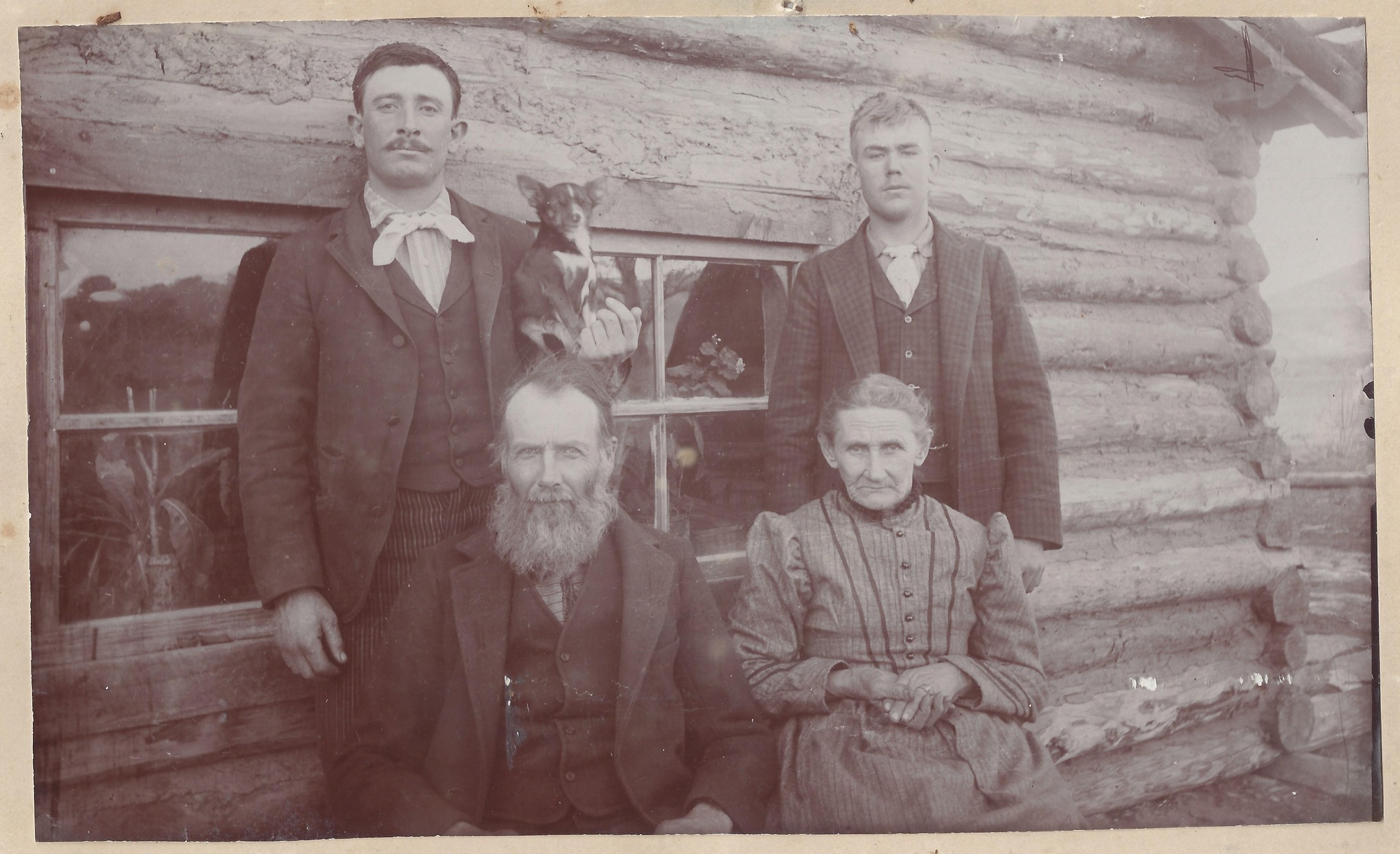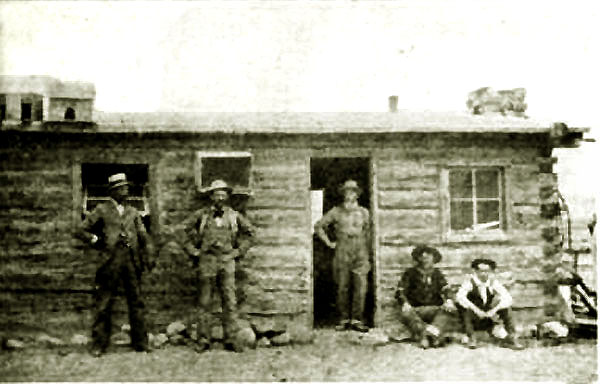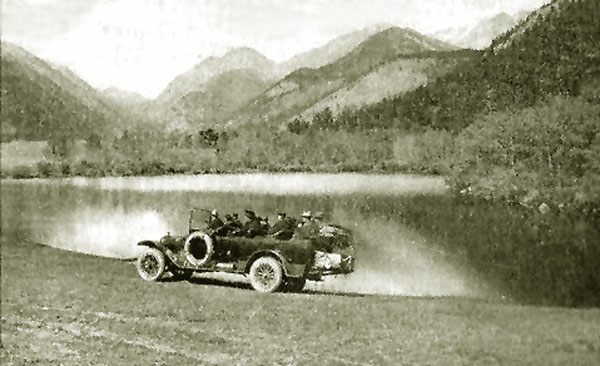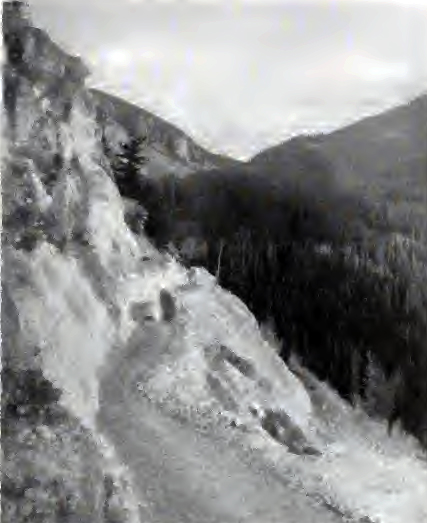|
List
of Physicians 1904
Mather Genealogy Study
Veterans Gravesite Locator
Viet Nam War Casualties – Wyoming
WWI Casualties – Wyoming
WWII Casualties – Wyoming
2019 Wyoming Brand Registry

The G.J. Jones and Simon Morgareidge families traveled
together from Nebraska to Wyoming in 1888. Jones, a
Union sympathizer, and Morgareidge, a Confederate,
bickered the whole way. Mrs. Jones worked to establish
a post office, which she named after William
Worthington Morgareidge and her daughter May.
The post office, and its location, was called Mayoworth.
The Mayoworth Post Office was established on
July 16,1889 with first postmaster Charlotte L. Jones.
I believe I have said this earlier but is still worth
repeating in the time periods of Territorial, Statehood
and after Statehood approximately 258 post offices in
Wyoming were established by women. I have seen the use
of post mistress however the post office apparently has
never changed their designation from postmaster.
I hope that those who continue to post on this site
can relate stories like this one which brings more
meaning to just the post office name and first postmaster.

Butch Cassidy, John D. Rockefeller Jr,
my grandfather, me (Don M Ricks)
A narrative thread, slender but certain,
weaves Butch Cassidy, John D. Rockefeller Jr,
my grandfather, and me into the history of
western Wyoming.
In 1889, a few weeks after the bank in
Telluride was robbed, Cassidy walked into
the Amoretti bank in Lander and sat down
with the young assistant manager,
E. A. Amoretti Jr. When Cassidy left he
had opened an account with a large cash
deposit, had made a new friend, and had
been hired to work on Amoretti’s EA Ranch,
five miles north of Dubois.
In 1922, the rough wagon road through
Togwotee Pass was upgraded to a rough road
for motor traffic. Amoretti established
the Lander-Yellowstone Park Transportation
Company. It hauled tourists from the new
Chicago & Northwestern terminal in Lander
to Jackson Hole. He built the Brooks Lake
Lodge for his guests, as well as the
Amoretti Inn at Moran, near the site of
what one day would become the Jackson
Lake Lodge. My grandfather, Cody Simonson,
was one of the young men in Dubois who
Amoretti hired to drive his motor stages.
In 1926, John D. Rockefeller Jr visited
Jackson Hole with his family, noticed the
Grand Tetons, and was inspired to create
a national park. The historical record
confirms they travelled from Lander and
stayed at the Amoretti Inn. It does not
disclose the name of their driver.
I wish I could report that, like Butch
Cassidy and my grandfather, I once worked
for Eugene Amoretti Jr. But that would
not be true. In 1950, when I was 13,
Francis Amoretti hired me for the summer
as chore boy on the EA Ranch. That was
in June. Her husband had died in March.
Photos: In this photo taken at the EA
Ranch around 1890, the man wearing the
white hat is believed to be Amoretti.
The man seated next to the door is believed
to be Butch Cassidy. That cabin is likely
the one that served as the unofficial
post office for the Dubois area at the
time.—A motor stage like the one my Grandfather
drove for Amoretti—The “upgraded”
Togwotee Pass road.
(Photos: Wyoming Tales and Trails)


The Kaycee Post Office was established on January 27, 1898 with first postmaster
George Kaltenbach. The first application was turned down because it was
presented as the letters K. C. and the postal service stated the name needed to
be spelled out to be accepted.
Portuguese Houses(1834-1840)
by Margaret Brock Hanson
There seems to be little factual history about
the first white settlement on the Powder River. But there are still lasting
evidences of a stockade and houses of an early trading post. These were always
referred to as the"Portuguese Houses," and are located on the north bank of the
Powder River, 11 miles east of the present town of Kaycee.
In 1834, (Antonio)
Montero received instructions from (Captain L.E.) Bonneville to trap in Crow
Indian Country of the Big Horn Mountains.
The post was evidently not built
to be a temporary winter shelter. It had stout stockade of cottonwood logs and
the houses were sturdily built of hewn logs. Montero was in charge of fifty men
and sent them out to trap the beaver.
In 1859, Captain W.F. Raynolds and Jim
Bridger visited the site of the Portuguese Houses. Raynolds, at this time was
make an exploration of the Yellowstone and Missouri Rivers. He wrote in his
journal: "Bridger and myself turned our faces down stream...after a ride of
about 15 miles we came to the ruins of some old trading posts, known as the
"Portuguese Houses," from the fact that many years ago they were erected by a
Portuguese trader named Antonio Montero. "They are now badly dilapidated, and
only one side of the pickets remains standing. These, however, are of hewn logs,
and from their character it is evident that the structures were originally very
strongly built. Bridger recounted a tradition that at one time this post was
besieged by the Sioux for forty days, resisting successfully to the last alike
the strength and ingenuity of their assaults, and the appearance of the ruins
renders the story not only credible but probable."
No citation for this
newspaper article that states...
The late Edward T. Burnett recorded the fact
that he saw ruins of these building in 1880. The old beaver hide press was still
there, and some of the stockade logs were still lying around. They had been
mortised to a heavy sill. The beaver press worked somewhat similar to the
present hay presses or balers, built of hewn cottonwood, and was used for baling
the beaver hides.
From a book by Tom Wall...
I asked Oris, "Why do they
call this place the old Portuguese Fort?" He replied, "I don't know- tis' always
been called that, ever since I can remember." I thought this strange as Oris was
an old-timer in the country and I thought the legend or history of the place
would be handed down to the younger generation. I looked around where the old
buildings had stood; one could pick out the spots by the piles of dirt and rock,
which was caused by the falling down of the dirt roofs and the stone chimneys.
There were three spots that were black as if from fires; maybe Indians burnt the
buildings down, or the black spots were caused by campers who camped here as we
were doing now. This was my first visit to the main stream of Powder River. The
Place looked very rough with sharp jagged rocks which gave it the appearance of
being a very difficult country to ride into, or to even get past, or around. It
reminded me of what I'd heard of Powder River being a wild and woolly place.
Talking to H.W. Davis a few years later about the Portuguese Fort, he stated,
"The Portuguese trappers put up the log cabins and when they got through
trapping for the season and went to leave, they would bury what extra powder
they might have left, so as to be sure that they would have some on their return
the next year. The he continued, "It was burying this gunpowder that gave Powder
River its name."
From an manuscript written by Jack Roberts...
Montero's
fort was built on a slight eminence alongside the Crow travois trail,
overlooking the Powder River. Groves of tall, sweet cottonwood lined both sides
of the river, providing adequate building material and fuel. The bark of the
sweet cottonwood was stripped for winter horse feed, and the straight logs were
hewn square for the stockade walls. The enclosure measured 112' x 116' along the
outside, with bastions on the northwest and southwest corner, making it possible
for a guard on the sod roof to view the riverbank for some distance both
directions. The horses were kept in a corral between the south wall and the
river, and the blockhouse overlooked the entire area. The main gate was on the
north wall, facing the Powder River Trail. The living quarters were built along
the inside walls, leaving a courtyard, or trading arena, in the center. Two
cisterns were built of rock, eight feet in diameter and located near each
bastion. This was a fire prevention measure in the event hostile Indians
attacked with incendiary arrows. A blacksmith shop was on the ground level in
the northwest bastion. The privy was in the southeast bastion, where the waste
was washed away through a rock-lined drain leading to the riverbank. The drain
was frequently doused with lime. A carpenter shop was located in the blockhouse,
and since there had never been a wagon in the Crow country, there was no
wheelwright. There was a two -story barracks for the single men along the south
wall, and the kitchen and mess hall were on the east wall. Rooms for fur storage
and trade goods were provided along the north wall. Near the main gate were the
master's quarters and the counting room for the clerk. Along the west wall were
small rooms for employees with squaws and children. The flat roofs of the
dwellings on the north and west walls served a s banquette for the guards.
 or Return
to WYGenWeb Project Home Page or Return
to WYGenWeb Project Home Page
Colleen
Pustola,
State Coordinator
Rebecca
Maloney,
Assistant State Coordinator
©Copyrighted
2018 by Rebecca Maloney for the benefit of the
WYGenWeb Project
|